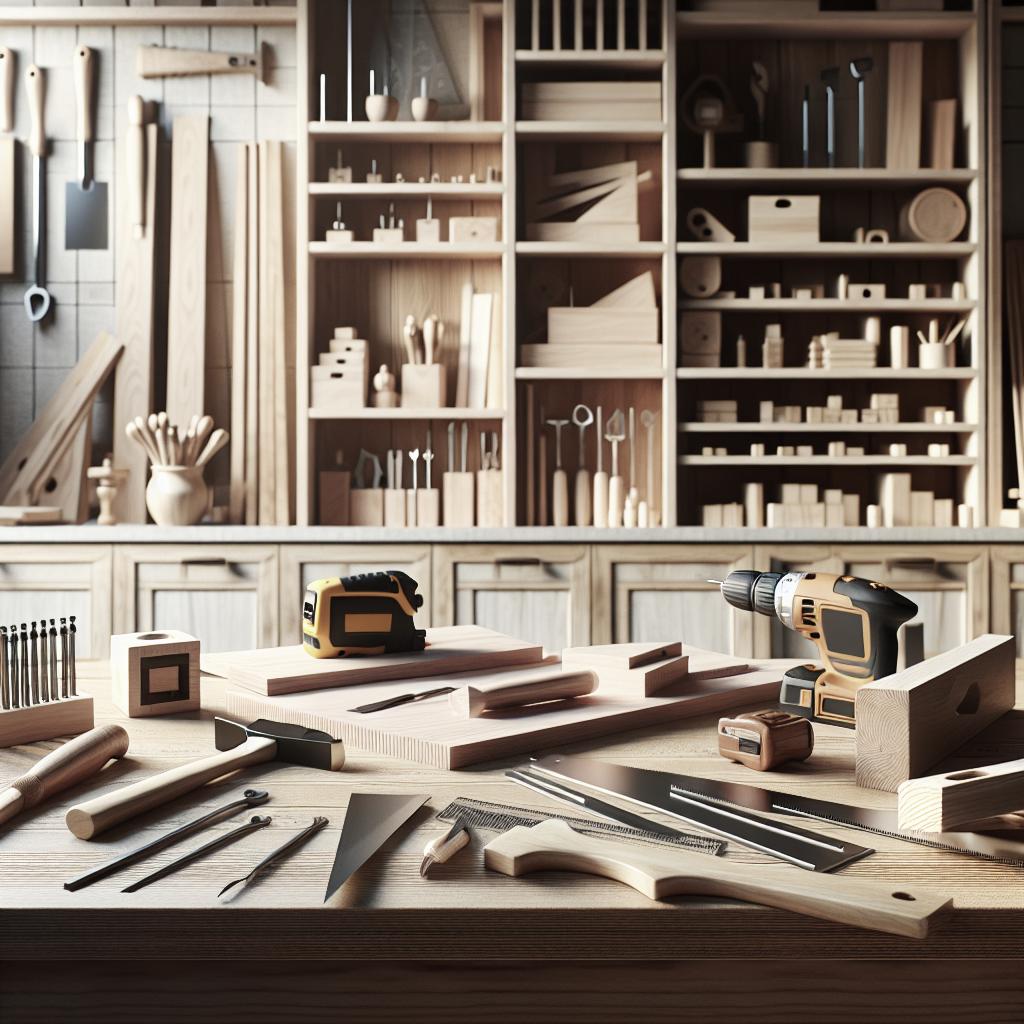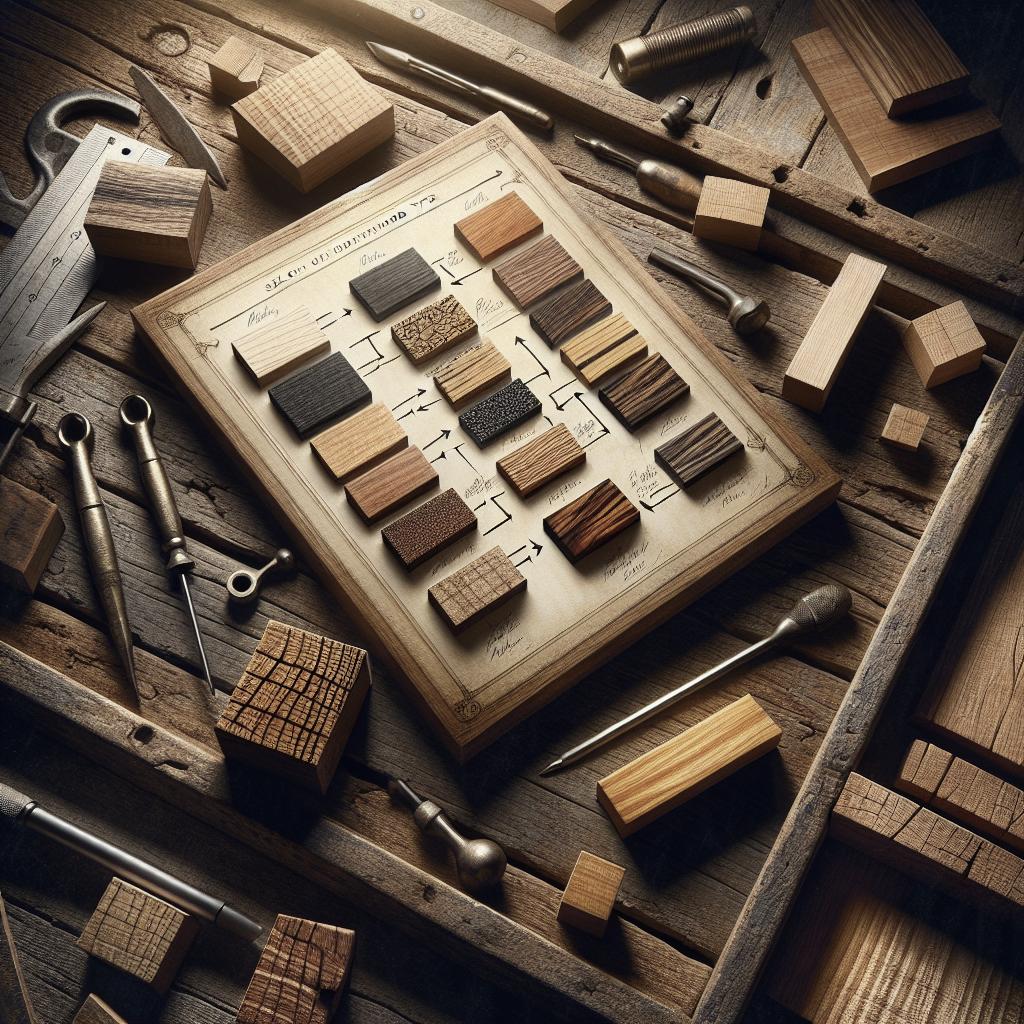“`html
How to Design Modular Wooden Furniture
Designing modular wooden furniture combines the beauty of craftsmanship with the flexibility of modern design practices. This blog post explores the intricacies of modular furniture connections, guides you through essential tools and materials, and provides a step-by-step guide to assembling your design. We will delve into reinforcing connections and understanding the role of weight distribution as pivotal for durable designs. Additionally, we’ll cover maintenance practices that ensure longevity and troubleshoot common issues. Finally, we share best practices for maintaining stability over time. Follow along to discover how you can create functional, stylish, and sustainable wooden furniture that can easily adapt to any space.
Modular Furniture Connections
The cornerstone of creating modular wooden furniture lies in understanding the variety of connections that can be utilized. The primary goal of these connections is to ensure flexibility and strength while allowing easy assembly and disassembly. Among the most common types of connections are dowels, screws, and cam lock fittings. Each type offers different benefits, with dowels providing a hidden connection and screws offering a more straightforward approach.
Cam lock fittings are particularly efficient for modular furniture as they provide a quick-release mechanism, making it easy to take apart and reconfigure pieces. The design process must ensure that parts fit together snugly, which prevents wobbling and maximizes the structural integrity of the furniture. Thorough planning and precise measurements during the design phase will lead to robust and reliable furniture.
Essential Tools and Materials
Creating modular wooden furniture requires a specific set of tools and materials. Basic hand tools like saws, hammers, and chisels are essential, but power tools can expedite the building process. A power drill is a crucial tool for making precise holes for dowels or screws, while a jigsaw is useful for cutting intricate shapes and designs.
The choice of wood is also critical; consider using hardwoods like oak or maple for their durability or opting for plywood for affordability and workability. Additionally, wood glue, sandpaper, and wood finish products are necessary to ensure joints are strong and the final product is smooth and polished. Using the right materials in conjunction with the right tools will help in creating long-lasting furniture.
Step-by-Step Guide to Assembling Modular Furniture
Begin by preparing all your materials and tools. Measure and cut your wood pieces to the required size. Next, lay out all your pieces as per your design blueprint. Ensuring each piece is properly aligned is crucial for a successful assembly.
Once you’re ready to assemble, start by joining the main structure. Use dowels, screws, or cam lock fittings as determined in your planning phase. It is advisable to begin with the base or largest sections and systematically work towards the smaller parts. Use clamps to hold pieces together as the glue dries.
Reinforcing Modular Furniture Connections
To enhance the durability of the connections between modules, it’s essential to reinforce them using supporting structures. Consider adding metal brackets or joints to sections prone to additional stress. This reinforcement becomes particularly important in larger furniture items such as cabinets or bookshelves.
Paying attention to the type of wood and its grain direction can also determine how connections are reinforced. Orienting the grain in a supportive direction increases the load-bearing capacity and inhibits splitting. Strategic reinforcement will ultimately add to both the aesthetic and functional value of your furniture.
Role of Weight Distribution
Weight distribution plays a pivotal role in the stability of modular furniture. Proper planning in the layout can ensure that weight is evenly distributed across the structure, reducing the risk of tipping. Consider the placement of larger, heavier modules on the lower sections of the design.
Introducing adjustable feet or supportive elements can help retain balance, especially on uneven floors. By analyzing potential stress points during the design phase, you can prevent issues related to weight distribution before they arise.
Maintenance Practices for Long-lasting Stability
Regular maintenance will keep your modular wooden furniture in excellent condition. Dust and clean the surfaces with appropriate wood cleaners to prevent grit buildup. Applying wood polish once every few months can help maintain the finish and shield the wooden surfaces from wear over time.
Inspect and tighten any loose connections regularly. Over time, movement and usage can loosen screws or other fittings. As a preventative measure, periodic maintenance can extend the life and usability of the furniture significantly.
Troubleshooting Common Issues
Modular furniture, although flexible, can face common issues such as wobbling, squeaking, or surface damage. Troubleshoot wobbling by checking for uneven surfaces or loose fittings. Squeaking often indicates friction in joints, which can be addressed by applying lubrication or tightening connections.
Surface damage can be minimized by using coasters or placemats. In case of scratches or dents, light sanding followed by refinishing can sometimes restore the appearance. Understanding these common issues and their solutions can aid in maintaining the furniture’s aesthetic and functional quality.
Best Practices for Long-Term Stability
Beyond regular maintenance, adopting best practices for using modular furniture can significantly enhance its lifespan. Avoid overloading shelves or seating areas, as excessive weight can stress joints and connections. Utilize protective furniture pads when moving items to guard against floor or surface damage.
Designing with disassembly in mind assures easy transportation and reconfiguration, which is ideal for long-term usage. Refraining from suspending items from a single point and distributing weight evenly will further promote the stability and versatility of the pieces.
Summary of Main Points
| Section | Summary |
|---|---|
| Modular Furniture Connections | Understanding varied connection types like dowels, screws, and cam lock fittings is crucial for modular design. |
| Essential Tools and Materials | Essential tools include saws, drills; materials involve hardwood, plywood, and finishes to ensure a quality build. |
| Step-by-Step Guide | Begins with preparation and proper alignment followed by systematic assembly using planned connections. |
| Reinforcing Connections | Utilizing metal brackets and understanding wood grain orientation are key for structural reinforcement. |
| Maintenance Practices | Regular cleaning and securing of connections are vital for maintaining furniture’s stability. |
| Troubleshooting Issues | Addressing common issues such as wobbling and squeaking by verifying and adjusting problematic areas. |
| Best Practices | Includes avoiding overloading and designing with mobility, ensuring extended usability and adaptability. |
Leave a Reply Cancel reply
Your email address will not be published. Required fields are marked *
Post navigation
“`


